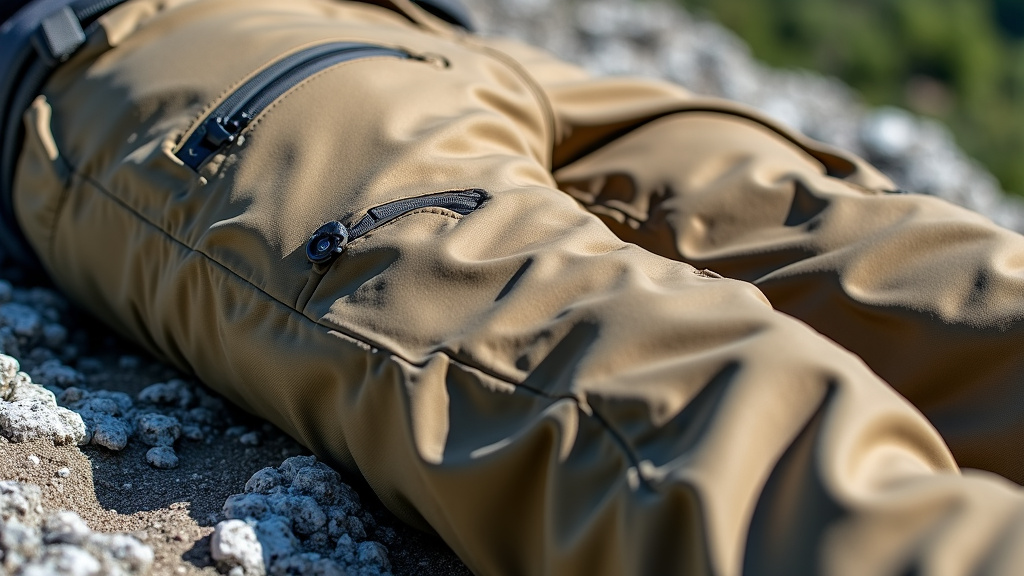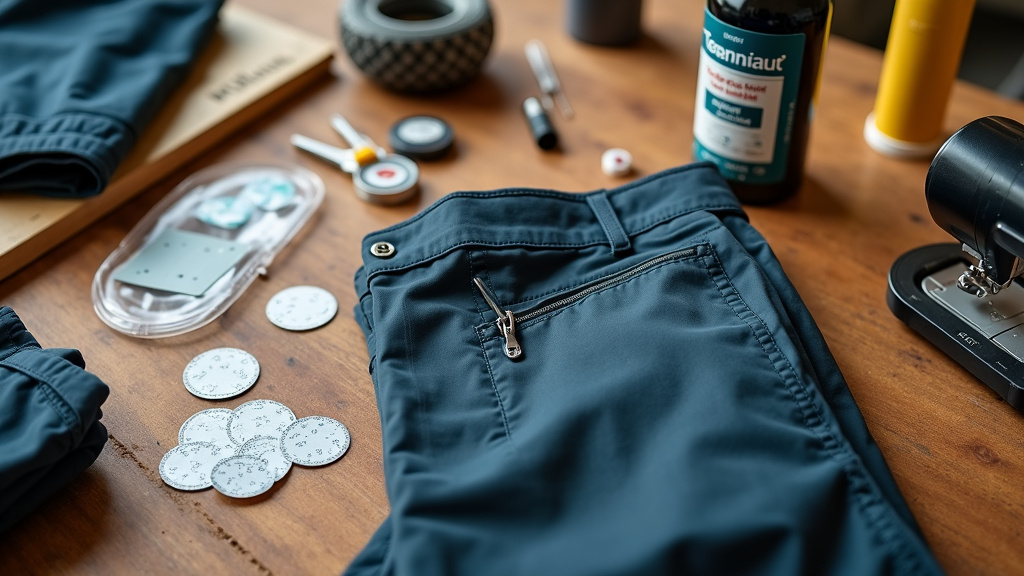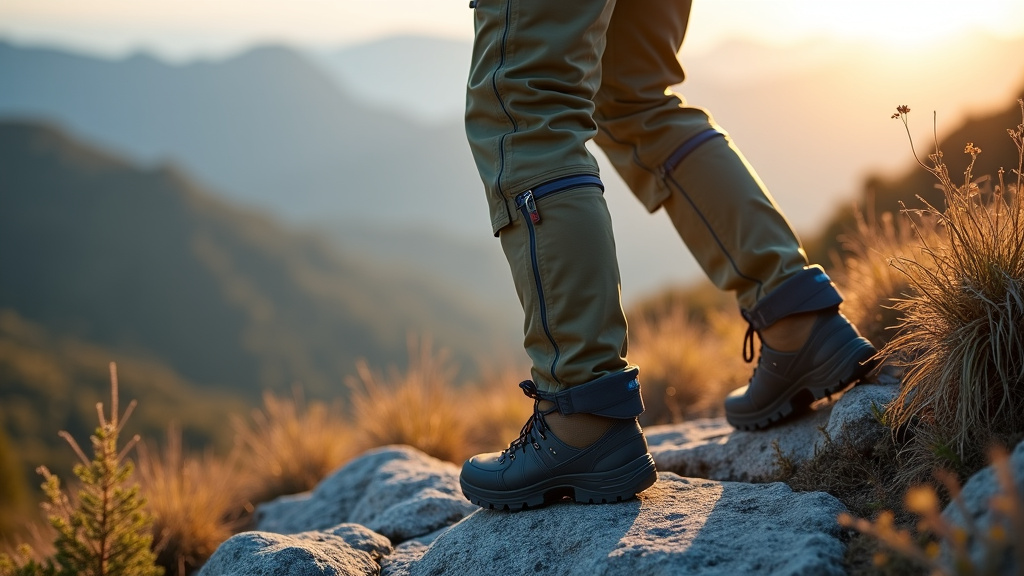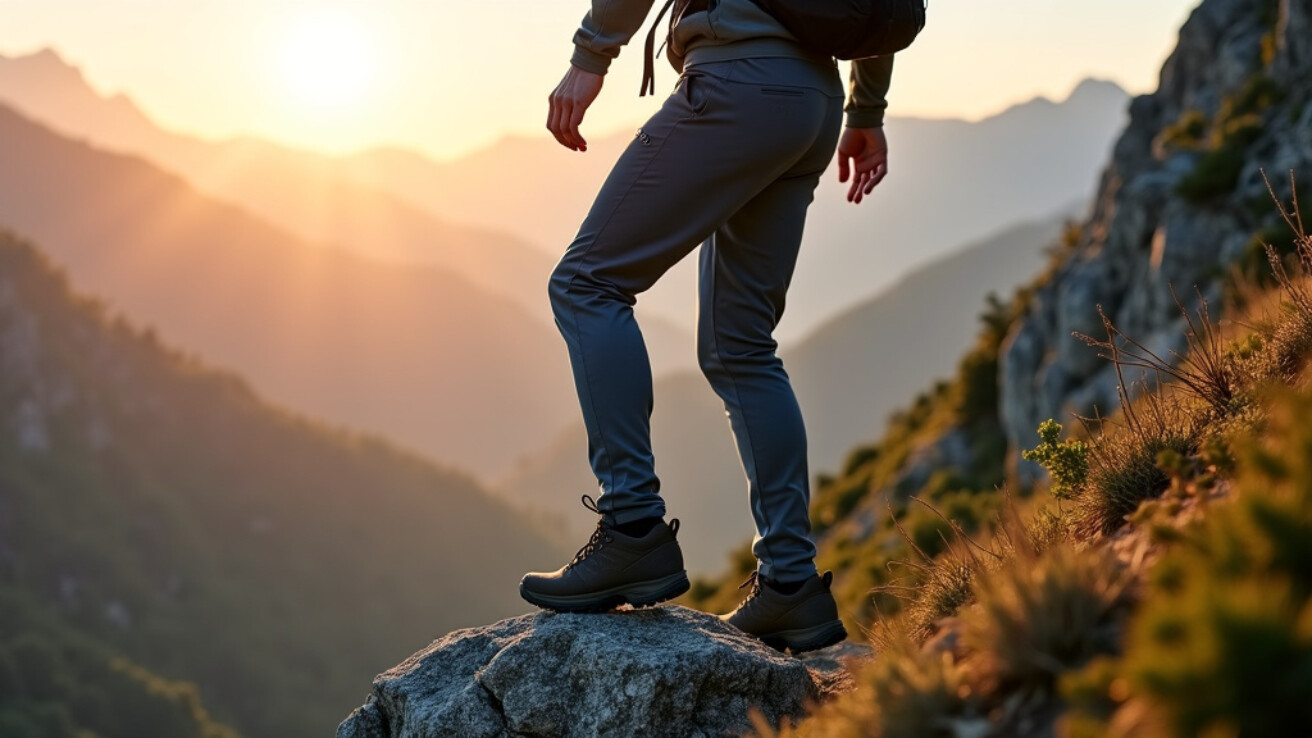Picture this: You’re halfway through an epic mountain trek when your cotton pants become a soggy, chafing nightmare. I’ve been there, and it’s exactly why choosing the right hiking pants is crucial for any outdoor adventure. As someone who’s logged thousands of trail miles testing gear, I can tell you that purpose-built hiking pants are worth every penny.
The best men’s hiking pants combine several essential features that set them apart from regular pants. Quick-drying synthetic fabrics ward off moisture while maintaining breathability. Articulated knees and gusseted crotches provide unlimited range of motion for scrambling over rocks or high-stepping through brush. Thoughtfully placed pockets keep essentials secure without interfering with your stride.
Today’s hiking pants offer incredible versatility to match your specific needs. Want protection from sun and thorns? Go with full-length pants featuring UPF-rated fabric. Hiking in variable conditions? Convertible pants with zip-off legs give you the flexibility to adapt on the fly. Looking for maximum mobility? Stretchy softshell pants move with you while still repelling light precipitation.
Essential Features of Top-Rated Hiking Pants

Your choice of hiking pants can make or break your outdoor experience. The best pairs seamlessly blend technical innovation with practical functionality to keep you comfortable and protected mile after mile.
At the core of any quality hiking pant is the fabric construction. Leading models utilize quick-drying nylon and polyester blends with built-in stretch, incorporating 10-15% spandex or elastane for optimal mobility. This material combination wicks moisture effectively while resisting abrasion from rocks and brush.
Articulated knees and a gusseted crotch are essential design elements that serious hikers shouldn’t compromise on. The Outdoor Research Ferrosi pants exemplify this with anatomically-shaped panels that move naturally with your body, preventing restriction during steep ascents.
Strategic storage proves crucial for quick access to essentials. Secure zippered pockets should be positioned for easy reach without interfering with hip belts or climbing harnesses. Multiple cargo pockets provide versatility for stashing trail snacks, maps, or a smartphone.
Sun protection has become increasingly important, with many premium hiking pants featuring UPF 50+ ratings to shield your legs from harmful UV rays at high altitudes. This protective quality pairs well with water-resistant DWR coatings that shed light precipitation and morning dew.
Breathability remains paramount, especially during intense activity or warm conditions. The best pants incorporate strategic mesh-lined pockets and zip vents to regulate temperature. Some models, like the Fjallraven Vidda Pro, feature dedicated ventilation zones along the thighs.
Key Features That Define Elite Hiking Pants
Quality hiking pants incorporate ripstop nylon or similar durable fabrics in high-wear areas like the knees and seat. This reinforcement prevents tears and extends the life of your investment, particularly important for technical terrain or off-trail exploration.
The waist design demands special attention – look for integrated belts or adjustable systems that maintain comfort under a pack’s hip belt. Some pants feature low-profile waistbands engineered to prevent chafing during extended wear.
For maximum versatility, convertible options with zip-off legs offer flexibility as conditions change. While not everyone prefers this style, the ability to transform into shorts can be invaluable during variable weather or multi-day adventures.
Top Brands and Their Signature Hiking Pants
The hiking pants market has evolved significantly, with leading outdoor brands incorporating innovative technologies and sustainable practices into their signature designs. REI Co-op, for instance, has made waves with their Trailmade Pants, which feature bluesign-approved fabrics offering exceptional breathability and an impressive price-to-performance ratio.
Patagonia continues to push boundaries with their eco-conscious approach, particularly evident in their Quandary Pants. These lightweight performers combine 94% recycled nylon with spandex, delivering outstanding mobility while maintaining the brand’s commitment to environmental stewardship.
prAna stands out for their dedication to sustainability and fair labor practices. Their Stretch Zion II pants exemplify this philosophy, incorporating Fair Trade Certified manufacturing and bluesign-approved materials while delivering exceptional comfort and durability for outdoor enthusiasts.
Each brand brings something unique to the table. Columbia’s Silver Ridge Convertible Pants excel in versatility and value, while Outdoor Research’s Ferrosi Pants have earned praise for their effective blend of durability and breathability in diverse conditions.
| Brand | Model | Material | Eco-Friendly Practices | Key Features | Price |
|---|---|---|---|---|---|
| Patagonia | Quandary Pants | 94% Recycled Nylon, 6% Spandex | Recycled materials, Fair Trade Certified | Lightweight, PFAS-free DWR coating | $99 |
| REI Co-op | Trailmade Pants | 96% Nylon, 4% Spandex | Bluesign-approved fabrics | Breathable, UPF 50+ Sun Protection | $70 |
| prAna | Stretch Zion II Pants | 95% Recycled Nylon, 5% Spandex | Fair Trade Certified, Bluesign-approved | Durable, Comfortable, Versatile | $95 |
| Columbia | Silver Ridge Convertible Pants | 100% Nylon | – | Convertible, UPF 50 Sun Protection | $65 |
| Outdoor Research | Ferrosi Pants | 86% Nylon, 14% Spandex | – | Breathable, Durable, Lightweight | $99 |
| Fjällräven | Vidda Pro | 65% Polyester, 35% Cotton | Greenland Wax Treatment | Durable, Ventilated Zones | $170 |
What distinguishes these manufacturers is their commitment to both technical innovation and sustainable production methods. From recycled materials to Fair Trade certification, today’s hiking pants demonstrate the industry’s growing environmental consciousness in outdoor gear manufacturing.
Convertible vs. Roll-Up: Choosing the Right Style
Versatility is essential when selecting hiking pants. After testing both convertible and roll-up styles across countless trail miles, I’ve found that each design offers distinct advantages for different situations and preferences.
Convertible pants with zip-off legs have earned their popularity among hikers. As an avid hiker, I’ve found them especially valuable during early morning starts when temperatures fluctuate significantly. According to research from Outdoor Gear Lab, these pants excel at temperature regulation, enabling quick adaptation to changing weather conditions.
The practical benefits of convertible pants are noteworthy. Their side zippers allow transformation into shorts without removing boots, making stream crossings and weather changes easier to manage. However, one potential drawback is that zipper placement around the knees can occasionally cause discomfort during steep climbs.
Roll-up pants provide a simpler, more elegant solution. Most feature button tabs or drawcords that secure the rolled cuffs during activity. They offer quick ventilation without the need to carry detached pant legs.
Regarding durability, roll-up pants typically have fewer potential failure points since they lack leg zippers. Their streamlined appearance also makes them versatile for both trail and town use.
When to Choose Each Style
Convertible pants excel during multi-day backpacking trips with variable weather conditions. The removable lower legs provide maximum ventilation and versatility for extended adventures.
Roll-up pants are ideal for day hikes and activities requiring occasional cooling without fully switching to shorts. They’re particularly useful for shallow water crossings or tick checks – simply roll up, address the need, and roll back down.
From my experience leading hiking groups, roll-ups appeal to those prioritizing simplicity and style, while convertibles are preferred by long-distance hikers and backpackers seeking maximum adaptability.
Consider your typical hiking environment and style when choosing between options. Select convertibles if you regularly face dramatic temperature changes or need full shorts capability. Choose roll-ups if you prefer a cleaner appearance and mainly need occasional ventilation.
For an at-a-glance comparison, consider the following features of convertible and roll-up pants.
Weather-Appropriate Hiking Pants: From Summer to Winter
When the mercury climbs during summer hikes, lightweight, breathable pants like the Outdoor Research Ferrosi shine. Made with 86% nylon and 14% spandex, these highly stretchy pants offer excellent ventilation and quick-drying capabilities, making them ideal for sweaty summit pushes and creek crossings alike.
For crisp autumn days on the trail, look for pants with more substance. The Prana Stretch Zion’s slightly heavier nylon blend provides extra warmth while maintaining breathability to prevent overheating during strenuous climbs. Its DWR coating effectively sheds light rain and morning dew common in fall conditions.
As temperatures plummet in winter, insulation becomes crucial. The Arc’teryx Gamma pants excel in cold conditions, featuring a softshell construction that blocks wind while maintaining breathability to prevent sweat buildup – essential since moisture can quickly lead to dangerous chilling in winter conditions.
Savvy hikers know that layering is key to adapting to changing weather conditions. During shoulder seasons, wear moisture-wicking baselayers under your hiking pants. For winter expeditions, pair insulated pants like the Fjallraven Vidda Pro Ventilated with merino wool baselayers for optimal temperature regulation.
Through years of trail experience, I’ve found that zip-off convertible pants prove particularly valuable during transitional seasons. While they might not win any fashion awards, their quick adaptability to temperature changes can mean the difference between a comfortable hike and a miserable slog.
| Season | Characteristics | Considerations |
|---|---|---|
| Spring | Protective and water-resistant, lightweight | Long pants for temperature variability, avoid tight fits, durable material to guard against branches and bugs |
| Summer | Convertible pants (zip-off to shorts), lightweight, UPF protection | Protection from poisonous plants and bugs, options to switch to shorts in hot conditions |
| Fall | Sturdy and lined, thicker material, moisture-wicking | Warmth for cooler temperatures, maintaining full range of movement, less concern about waterproofing |
| Winter | Waterproof, moisture-wicking, windproof, insulating | Protection against snow and sleet, breathability to manage sweat, high insulation for cold weather |
Caring for Your Hiking Pants: Maintenance and Repairs

Hiking pants endure significant wear on the trails. From scrambling over rocks to pushing through thorny bushes, these essential garments need regular care to maintain peak performance. Through years of experience, I’ve found that proper maintenance can triple the lifespan of your favorite hiking pants.
Washing your hiking pants correctly is crucial for maintaining their technical properties. Use a gentle cycle with cold water (30°C maximum) and avoid harsh detergents. For pants with DWR (Durable Water Repellent) coating, use specialized technical wash products to preserve the water-resistant properties.
When drying, patience is essential. Air-dry your pants away from direct sunlight and heat sources, which can damage the fabric and specialized treatments. Avoid using the dryer on high heat, as this will compromise their performance and durability.
Repairing Holes and Tears
Encountered a tear from your latest adventure? Most damage is repairable. For small holes and tears, Tenacious Tape works exceptionally well – it’s a durable repair tape specifically designed for outdoor gear. Cut a patch with rounded corners to prevent peeling, and apply it to both sides of the fabric for maximum strength.
For larger tears, you’ll need to use a sewing kit. Use a strong synthetic thread and reinforce the repair with a patch on the inside. Remember to seal the stitched area with seam grip if your pants have a waterproof membrane.
Maintaining Water Resistance
If you notice your pants starting to “wet out” (water soaking in rather than beading up), it’s time to reapply the DWR treatment. Clean your pants thoroughly first, then use a spray-on or wash-in waterproofing treatment following the manufacturer’s instructions.
Proper storage is equally important as cleaning. Store your hiking pants in a cool, dry place, and avoid stuffing them into tight spaces. I hang mine loosely or fold them with minimal creasing to prevent damage to technical coatings or treatments.
Budget-Friendly Options: Great Hiking Pants Under $100
While premium hiking pants can cost $200 or more, you don’t need to spend a fortune to get excellent performance on the trail. Several highly-rated pants deliver impressive quality and functionality at wallet-friendly prices under $100.
The REI Co-op Trailmade pants excel as a standout budget option at just $70. These lightweight pants offer exceptional performance with breathable nylon fabric, a DWR water-resistant coating, and UPF 50+ sun protection. The athletic fit and stretchy material ensure excellent mobility for scrambling over rocks or navigating challenging terrain.
Another top value pick is the REI Sahara Convertible pants at $80. These versatile pants feature zip-off legs that convert to shorts, effectively providing two garments in one. With six pockets, articulated knees, and quick-dry fabric, they offer premium features at a mid-range price point.
For those seeking maximum durability on a budget, the Columbia Silver Ridge Convertible pants at $65 deliver exceptional value. Though not as feature-rich as pricier options, their ripstop nylon construction withstands abrasion and regular use effectively. They also provide UPF 50 sun protection and convert to shorts when temperatures rise.
Budget pants often use similar synthetic fabrics and construction techniques as premium alternatives. The main differences appear in features like pocket quantity, zipper quality, hardware durability, and extras such as integrated belts. Yet the core hiking performance remains reliable and capable.
For the best value, select pants that emphasize the features most important to your needs, such as durability, weather protection, or ventilation. Many affordable options excel in specific areas while making sensible compromises to maintain a lower price point.
Conclusion: Stepping Out in Comfort and Style

Selecting the perfect hiking pants can transform an ordinary trek into an unforgettable outdoor experience. Through careful examination of technical aspects and real-world performance, the right pair serves as an essential bridge between you and nature’s challenges.
The ideal hiking pants should feel like a natural extension of your body, offering breathability during steep ascents while providing protection against changing weather. Whether you choose the lightweight versatility of nylon blends or the rugged durability of reinforced softshells, your selection should match your specific adventure needs.
Consider the details that enhance trail performance – articulated knees for fluid movement over rocky terrain, secure zippered pockets for essential items, and practical features like roll-up legs for stream crossings. The best pair combines technical performance with essential comfort, allowing you to focus on the stunning vistas ahead instead of fidgeting with your gear.
The research shows that while no single perfect pair exists for everyone, understanding material and design performance in various conditions leads to informed decisions. Whether you’re planning casual day hikes or ambitious backcountry expeditions, carefully selecting your ideal hiking pants will enhance comfort and enjoyment on every adventure.







